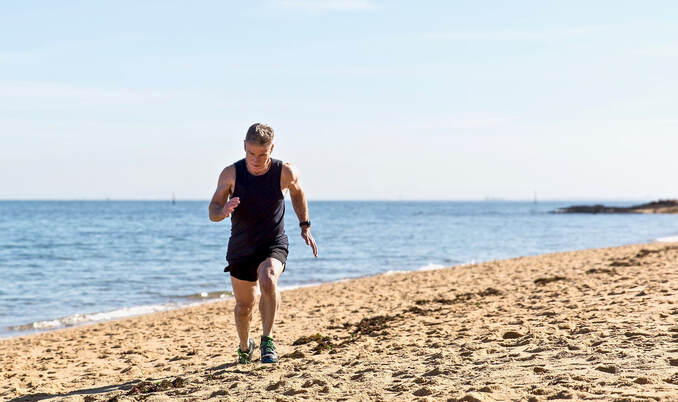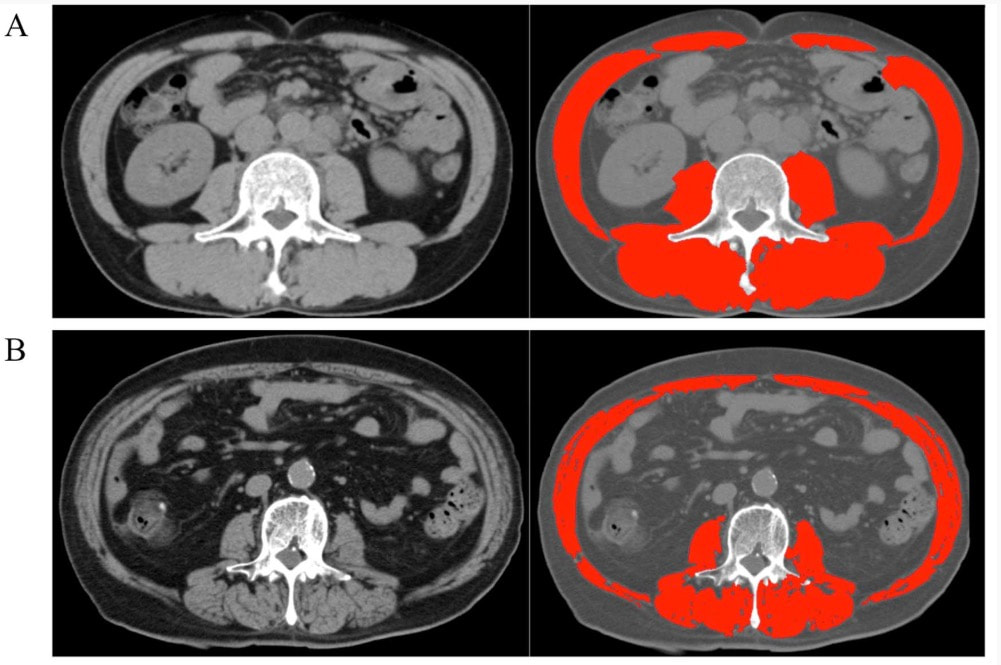|
SEARCH My Blog (Opens in new tab)
Are you afraid to use these 3 simple tests now to predict your longevity and quality of life4/1/2020
My goal is to help you live longer better, but how would you measure your progress towards that objective?
You could wait, and see if you do indeed survive longer than your less active friends. Or, you could try some simple tests now, which will give you early signs of your progress. Poor results on these tests correlate with earlier death, and more probable hospitalisation as well. You will live longer better if you take action to improve the underlying causes of poor results. The common causative factor for getting improved results is ... exercise! Did you guess? Grip strength is now proven to be an accurate biomarker
Grip strength is well established as an indicator of what your doctor calls "all-cause mortality". That's a polite way of saying "how soon you might die".
This is because grip strength reflects overall body strength and the ability to carry yourself effectively in daily life. (But there is not a direct inverse relationship - isolating and improving your grip strength won't reduce your other morbidity indicators.) The main reason that grip strength is an accurate biomarker is that it reflects the overall condition of your skeletal muscles. As you age loss of skeletal muscle (sarcopenia) results in less strength to perform necessary basic activities such as standing from a seated position, grooming oneself, or preparing a meal. Loss of skeletal muscle is also the most significant contributor to a reduction of resting metabolic rate possibly leading to weight gain and obesity Recently (October 2019) it has been found that grip strength has a wider role than just as a predictor of aging. The research confirmed that grip strength is a reliable "biomarker" which is: ...consistent as an explanator of concurrent overall strength, upper limb function, bone mineral density, fractures, falls, malnutrition, cognitive impairment, depression, sleep problems, diabetes, multimorbidity, and quality of life".
The same research also showed a predictive link between grip strength and all-cause and disease-specific mortality, future function, bone mineral density, fractures, cognition and depression, and problems associated with hospitalisation.
It's fascinating that this one simple test can give you such a good insight into your future quality of life. However, it's not so simple to measure your grip strength as most people don't have a device handy. It's not like having a set of scales in the bathroom. That's why you need to know that there is a strong correlation between grip strength and our basic physical activities, e.g. standing, walking, going out. Grip strength is an indicator of our potential to live better longer
Fortunately, we can measure some of these more conveniently than grip strength, and I give you three tests to try below.
The tests reflect the research showing that knee extension strength, lean mass, walking speed, and chair stand pace are all correlated with the same predictions indicated by grip strength. Another predictive value of grip strength is relative to hospitalisation. Not only are patients with weak grip strength more likely to be admitted to the hospital, but they are also more likely to experience complications while there. There is also a strong relationship between low grip strength and increased likelihood of falls -- leading to bone fractures and a lower life expectancy. In summary, we want to have a firm grip for as long as possible. Not because of the strong grip per se, but because of its value as a biomarker of future health, physicality, and hospitalisation. In other words, its value is in us knowing that we are maintaining our potential to live better longer. Three grip strength tests you can do at home
Here's how you can easily get a grip on your current, and future, health status
Here are three tests, each of which correlates with the grip strength test predictions: chair stands, walking speed, and weight gains.
Chair Stands
Chair stands are a simple and effective test: you stand in front of a chair and then count how long it takes you to sit and stand back up 10 times. You may not use your hands to push yourself up:
I can do ten in 8 seconds (72 years old) -- which is why it surprises me when I see people struggling with this simple everyday activity. My muscular capacity to do this well stems from me choosing to use kettlebells as the mainstay of my exercise program over the last 20 years. Kettlebells build skeletal muscle, strength, balance and stability.
Walking Speed
The second test is walking speed. Walking speed also correlates to similar outcomes as grip strength. For example, a survey conducted in England and Scotland of more than 50,000 walkers aged 30 and older found that brisk walking benefited older people most. For those over 60, fast walkers demonstrated a 53% reduction in cardiovascular disease mortality and average-paced walkers showed a 46% reduction. Measuring your walking speed does not have to be an exact science. A fast pace is considered to be five to seven kilometres per hour (3.1 to 4.3 mph). An average pace is three to five kilometres per hour, and a slow pace less. In terms of time for each kilometre:
You can measure your time around a regulation sports track, or measure the distance of a walk using Google Maps or a fitness band. If you are only able to walk slowly, then it is an indicator of poor overall muscle strength and physical activity function, and an increased risk of future hospitalisation. The latter, because you are more likely to lose balance, fall and require admission. Statistics from the US and Australia show that if you are hospitalised after a fall your lifespan will be reduced by 5 years, on average. That's why maintaining your cognitive and muscular capacity to balance should be one of your key exercise goals. And why, in particular, you should avoid using gym machines.
The Weight Gain Test
This weight gain test is a proxy for lower muscle density. Lower muscle density is associated with the same outcomes predicted by low grip strength. If you have lower muscle density, then it means that more fat has infiltrated your muscles. This is a test that you have to do over a period. That's not so convenient. On the other hand, you can do it yourself at home. Muscle loss as you age should mean that your weight is dropping. Studies show that we lose ½ to 1 per cent of our lean muscle mass each year, starting at age 30.
This age-related loss of muscle mass is typically offset in body weight by gains in fat mass. Usually, men put on about 1kg per year after 50 and women half that amount. This affects grip strength because we have less muscle and more fat in the skeletal muscle that remains i.e. lower muscle density.
My weight-gain test is based on research findings that muscle size and lean mass, are not associated with outcomes related to grip strength - but muscle density is. Lower muscle density means less strength. Here is the test, only applicable if you are relatively inactive or do not change your activity level:
Low muscle density correlates with the same outcomes as lower grip strength -- it will adversely affect your daily physical functioning and indicates a high probability of future hospitalisation.
If you are on the wrong side of any of these tests, then regular exercise can significantly improve your prognosis.
The good news is that it is never too late to rebuild your skeletal strength, and to mitigate the risks of sarcopenia. Use these resources to understand what type of exercise might suit you best, and consult your health professional:
These three simple tests above will help you to understand your risk profile. I hope that this will provide motivation for you to take action to live longer better.
Follow me on Quora for more health and fitness tips.
If you enjoyed this article >> Follow me Leave a comment >> Share it >> Stay healthy If you have any questions email me and I will get back to you.  RSS Feed RSS Feed
Latest: get your free customised fitness plan designed uniquely for you.
|
ChoicesSince I was diagnosed at 50 with Type 2 diabetes I've been learning how to do bone-building fitness training which lowers my age. You can too. It's your choice. Walter Categories
All
Archives
May 2023
|





